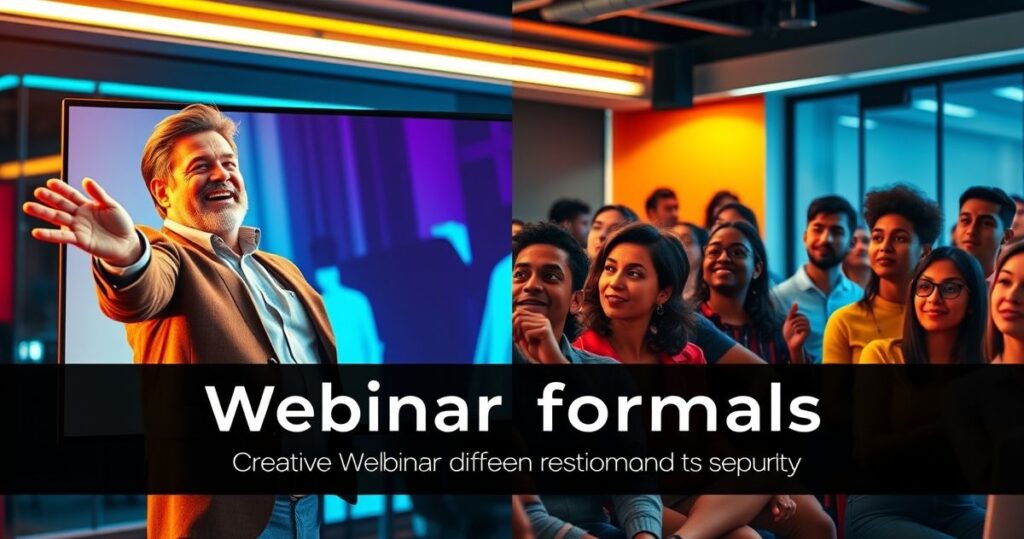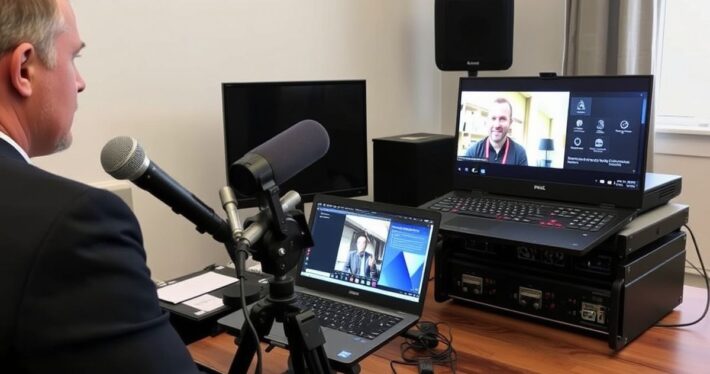Webinar Format: Choosing the Right Structure

What is the Best Webinar Format for Your Audience?
Webinars have become a cornerstone of digital marketing, offering a dynamic way to educate, engage, and convert your audience. But here’s the kicker—not all webinars are created equal. The format you choose can make or break your event. So, how do you pick the right structure that aligns with your goals and resonates with your audience? Let’s dive in.
Understanding the Core Webinar Formats
Webinar formats aren’t one-size-fits-all. Depending on your objectives—whether it’s lead generation, product launches, or customer education—you’ll need to tailor your approach. Here are the most effective formats and when to use them:
1. The Solo Presentation
This is the classic format where a single presenter delivers a focused, educational session. It’s perfect for:
- Teaching a specific skill or concept
- Showcasing thought leadership
- Building trust and authority
Real-World Example: Imagine you’re launching a new software tool. A solo presentation allows you to demonstrate its features, explain its benefits, and address FAQs in a streamlined way.
2. The Panel Discussion
Panels bring together multiple experts to discuss a topic from diverse perspectives. They’re ideal for:
- Engaging broader audiences
- Exploring complex subjects
- Driving interactive Q&A sessions
Pro Tip: Use a moderator to keep the conversation on track and ensure all panelists get equal airtime.
3. The Interview-Style Webinar
In this format, you interview a guest expert or influencer. It’s great for:
- Leveraging someone else’s audience
- Adding credibility and fresh insights
- Creating a conversational tone
Case Study: A SaaS company increased webinar attendance by 40% by inviting a well-known industry influencer to share their success story.
4. The Live Demo
Nothing beats showing your product or service in action. This format is best for:
- Product launches
- Highlighting unique features
- Overcoming objections
Actionable Advice: Make your demo interactive by asking participants questions and addressing their concerns in real time.
5. The Workshop
Workshops are hands-on, immersive sessions where attendees learn by doing. Use them for:
- Teaching practical skills
- Building deeper connections
- Encouraging replay value
Example: A marketing agency used a live workshop to teach attendees how to create high-converting landing pages, resulting in a 25% increase in post-webinar sign-ups.
How to Structure Your Webinar for Maximum Impact
Now that you know the formats, let’s talk structure. A well-organized webinar keeps your audience engaged from start to finish. Here’s a proven framework:
1. The Hook (First 5 Minutes)
Start with a bang! Share a surprising statistic, tell a compelling story, or ask a thought-provoking question to grab attention.
2. The Value (Next 10-15 Minutes)
Deliver your core content. Focus on actionable insights, practical tips, or inspiring ideas that resonate with your audience.
3. The Transformation (Next 10 Minutes)
Show your audience what’s possible. Share case studies, testimonials, or before-and-after examples to illustrate the benefits of your solution.
4. The Offer (Final 5-10 Minutes)
Introduce your product, service, or next step. Be clear about what you’re offering, why it’s valuable, and how to take action.
5. The Call-to-Action (Last 2-3 Minutes)
End with a strong CTA. Whether it’s signing up for a free trial, scheduling a consultation, or downloading a resource, make it easy and compelling.
Balancing Education and Engagement
Let’s be honest—no one wants to sit through a 60-minute slots! The key is balancing education and engagement. Here’s how:
- Use visuals like slides, videos, or live polls to break up monotony
- Incorporate interactive elements like Q&A sessions or live chats
- Keep your content concise and focused
Pro Tip: Use AI-powered tools like our Slide Outline Creator to design presentations that balance information and interaction seamlessly.
Tailoring Your Format to Your Audience
Your audience’s preferences should dictate your format. For example:
- B2B audiences often prefer in-depth presentations or panel discussions
- B2C audiences may gravitate toward live demos or workshops
- Niche audiences might enjoy interview-style webinars with industry experts
Question to Ponder: What keeps your audience up at night? Align your format with their pain points for maximum impact.
Common Mistakes to Avoid
Even the best webinar formats can fall flat if you make these errors:
- Overloading with information (less is more!)
- Ignoring audience interaction (engagement is key)
- Skipping the tech rehearsal (always test your setup!)
Real Talk: The first webinar I ever hosted was a disaster because I didn’t test my mic. Learn from my mistakes!
Tools to Elevate Your Webinar Game
Creating a professional webinar doesn’t have to be complicated. Our AI-powered tools can help:
- Slide Outline Creator: Craft balanced, engaging presentations
- Webinar Offer Builder: Structure your offer for maximum conversions
- High-Value Bonus Brainstormer: Generate irresistible bonuses
- Risk-Reversal/Guarantee Generator: Make saying “yes” a no-brainer
Example: A client increased their webinar conversions by 30% after using our Offer Builder to create a clear, value-packed offer.
The Bottom Line
Choosing the right webinar format is about understanding your audience, aligning with your goals, and delivering value in a way that engages and converts. Whether you’re going solo, hosting a panel, or running a hands-on workshop, the key is to keep it focused, interactive, and actionable.
So, what’s your next webinar going to look like? With the right format and tools, you’ll not only meet but exceed your audience’s expectations.



